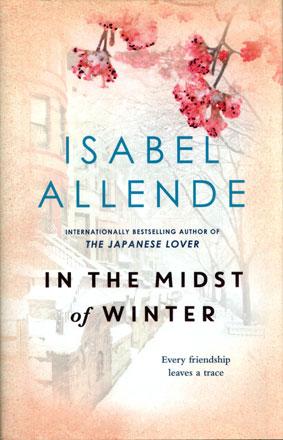You are here
Three generations of women wrestle with fate
By Sally Bland - Jan 11,2016 - Last updated at Jan 11,2016
The Valley of Amazement
Amy Tan
New York: HarperCollins, 2013
Pp. 589
In this intricately plotted novel, Amy Tan ushers the reader into a unique world “full of temporary promises and guile”, as she tells a tale of great loves and betrayals, of courage and cowardice, tradition and transition, kindness and cruelty. (p. 148)
Although there are interludes in San Francisco, New York, and an isolated Chinese village, the pivotal setting is Shanghai at the turn of the 20th century, specifically its high-class courtesan houses where pleasure and business comingle.
The events that transpire in the novel could only have unfolded as they did in this unique environment, which Tan recreates with stunning descriptions of the décor, costumes, jewellery, banquets and entertainment made available there to men of means. Even more engrossing is her character portrayal — the madams, courtesans, attendants, servants and last, but not least, the clients who range from handsome and generous to downright scummy, though strictly enforced protocol usually eliminates the latter.
There is also a bit of humour packed in, based on Chinese-English wordplay and cultural misunderstandings. Less amusing are the stories of how the “flowers” arrived at the houses, whether escaping abusive marriages or sold by desperately poor parents. Tan deftly moves her characters about as they interact, then pull apart, only to have their paths cross again years later.
Though the courtesan houses were a world unto themselves, Tan’s rendition explains them in the context of Chinese society at the time, revealing much about values, customs, superstitions and class hierarchies. Fate plays a big role in people’s thinking and actions, and the plot can be interpreted as the individual’s battle with fate.
Tan’s rendition also makes it clear that the courtesans are not to be confused with ordinary prostitutes. Like Japan’s geishas, they are painstakingly trained in the art of courtship and seduction, including singing, dancing, storytelling, etiquette and poise, in addition to sexual favours, in order to provide their clientele with total relaxation, satisfaction and escape from the pressures of daily life and loveless, arranged marriages.
This is a world of precarious opportunity: A beautiful, talented 13-year-old can make her fortune in a single night, but before the age of 25, she is finished, relegated to being a trainer for the new flock of “flowers” or a common prostitute. While there is abundant evidence that men hold the reins of power and wealth in this world, Tan’s story shows that women can gain a great deal of leverage if they are daring enough to defy fate or wise enough to adapt to it — and if they stick together. It is significant that the two main characters, Lucia Minturn, and her daughter, Violet, each have a clever, loyal, Chinese female friend who sticks with her through thick and thin.
Violet is the predominant voice in the novel, narrating her childhood in Hidden Jade Path, the prestigious courtesan house owned by her American mother. Though spoiled by the staff, Violet is lonely and insecure: she doubts the love of her mother who always seems to have other priorities, and is haunted by not knowing who her father is. She finds comfort only in her cat, and in knowing that she is “a thoroughly American girl in race, manners, and speech…” (p. 1) Rigid separation between locals and foreigners is the rule, but at Hidden Jade Path, Chinese and Western businessmen meet and strike lucrative deals in the Grand Salon. Nonetheless, Violet is influenced by racist notions that Americans are superior to Chinese, but her subsequent discovery of her father’s identity changes all that. Soon everything changes, and race and identity are shown to be malleable factors.
As China transforms from dynastic rule to republic, there are growing protests against the colonial treaties that give foreigners privileges in the International Settlement. Sensing potential danger, Lucia sets sail for San Francisco, but her old lover, who is supposed to arrange Violet’s passport, sells the girl to another courtesan house instead of bringing her to the boat. Thus begins Violet’s new life, the first of four reinventions of herself during which she experiences infatuation, real love, marriage, motherhood, death, separation from her daughter and abuse. Meanwhile, the rage she harbours towards her mother for abandoning her continues to simmer, at times fuelling her fierce independence and survival instincts, at other times, motivating bad choices.
Tan adeptly holds the reader in suspense until the end of the novel when Lucia finally tells her side of the story, filling in the many blanks which have plagued her relationship with her daughter. At this point, the stories of mother and daughter merge, appearing to have followed the same pattern. Violet’s daughter, Flora, seems poised for the same. There is a strong psychological element in this story of three generations of women. All three grow up doubting their mother’s love; all tread a torturous path to discover who they are; all are engaged in a search for love and a wrestling match with fate.
Related Articles
In the Midst of WinterIsabel AllendeTranslated from the Spanish by Nick Caistor and Amanda HopkinsLondon: Scribner, 2018Pp.
“Dreams of Joy” features a Chinese family that is torn apart by personal failings, war and post-revolutionary borders, but persists in trying to reconstruct itself.


















